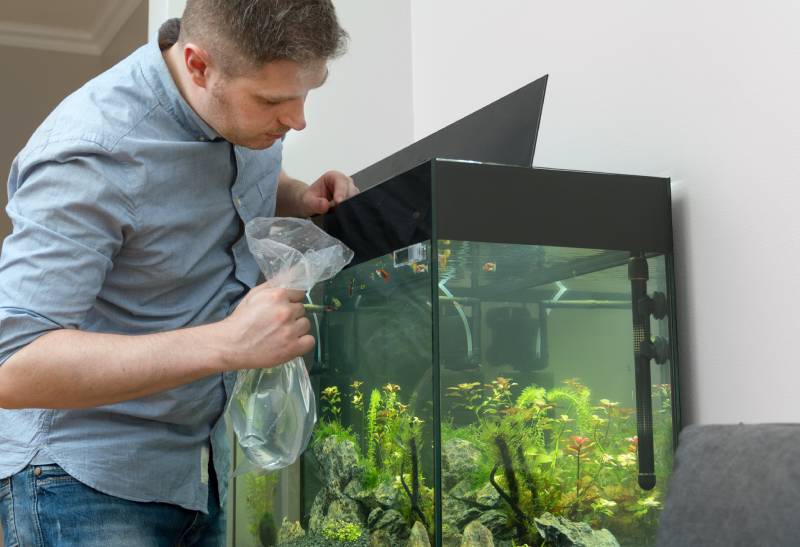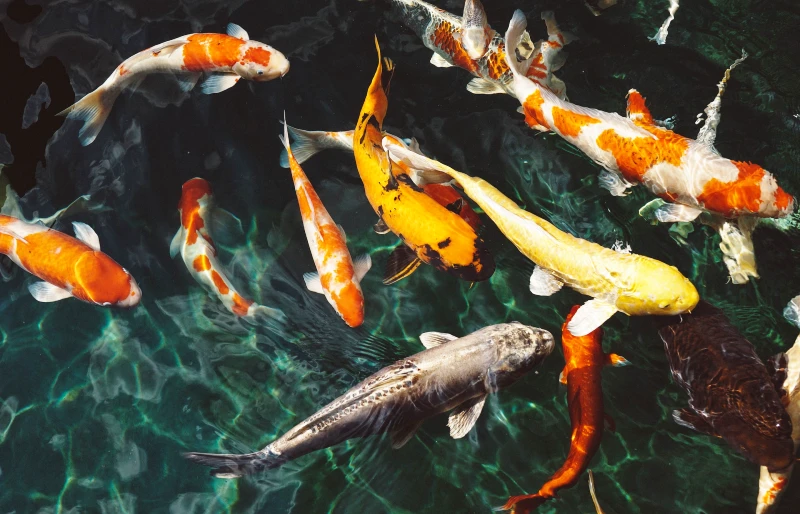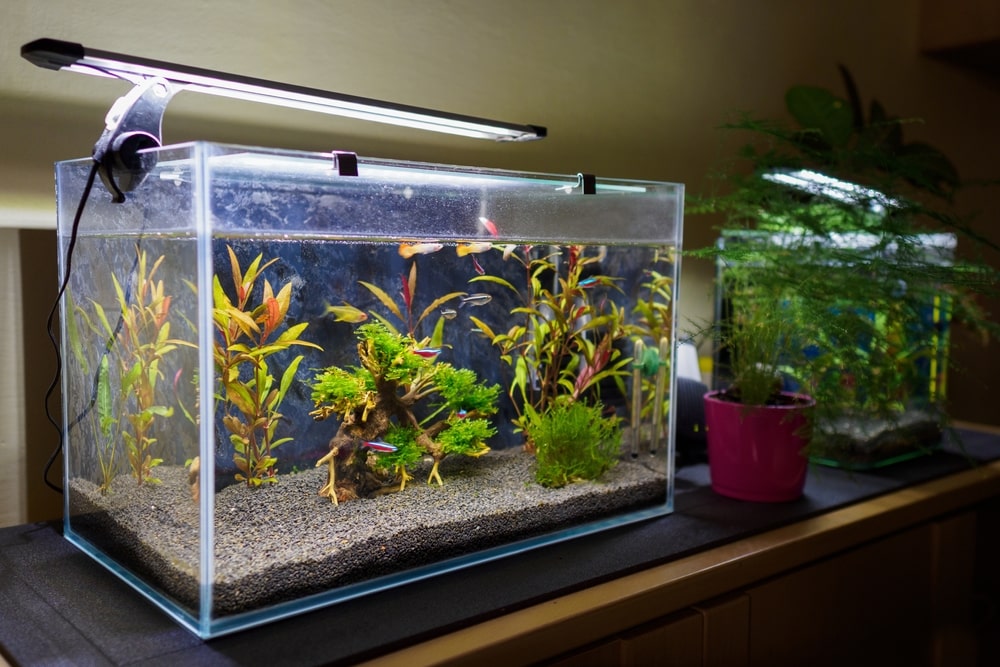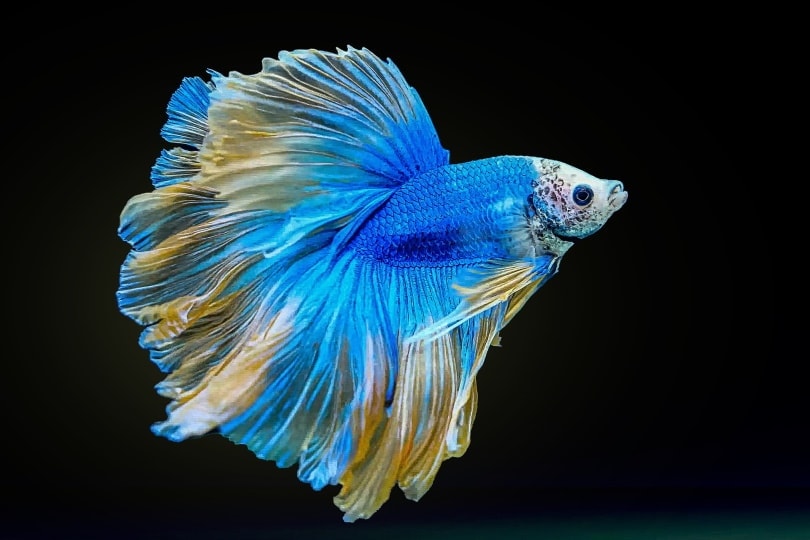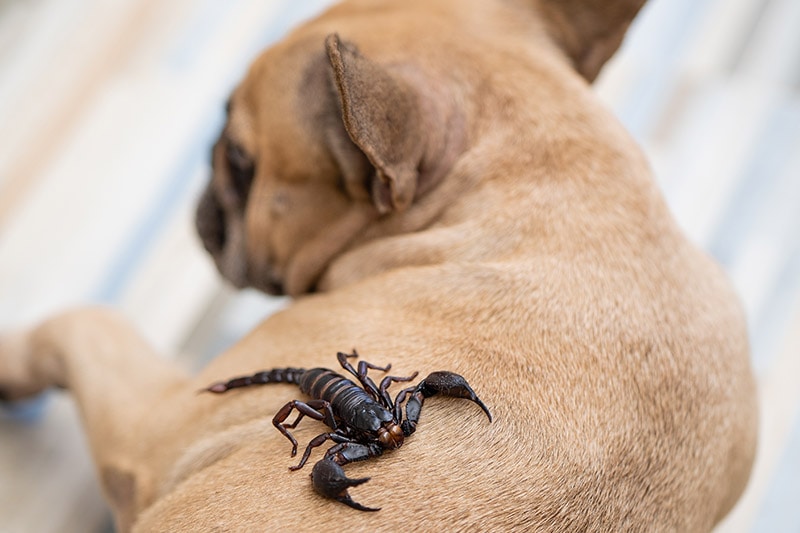9 Great Tank Mates for Serpae Tetras (With Pictures)

Updated on
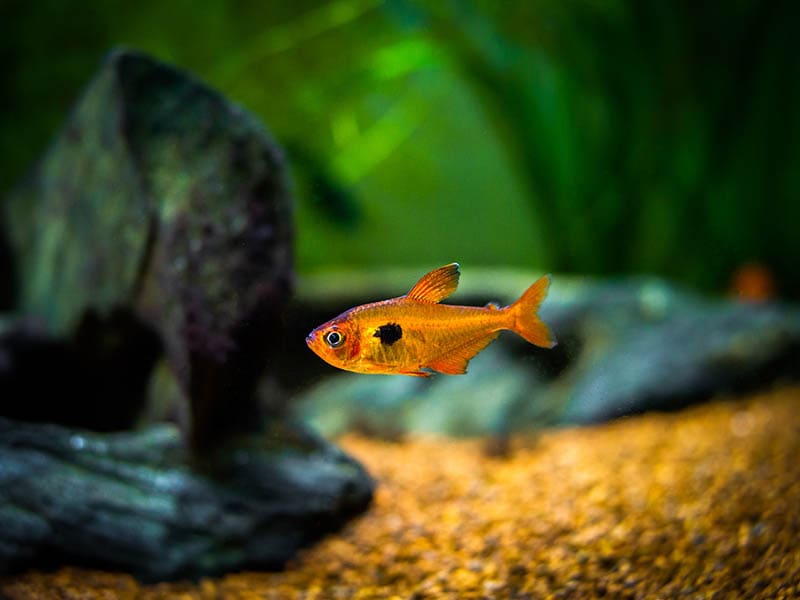
Click to Skip Ahead
The Serpae tetra is a freshwater fish that makes a great addition to an aquarium. They are colorful, playful, and easy to care for. Serpae are typically red but can range from an olive brown to a bright red hue with black markings, depending on the fish.
Whether you are planning on investing in your first Serpae tetra or already have one and are trying to determine if your new fish should have tank mates, we have you covered. We’ll go over the benefits and the best tank mates that will make your tetra comfortable and happy.
The 9 Tank Mates for Serpae Tetras
1. Bushynose Pleco (Ancistrus sp.)
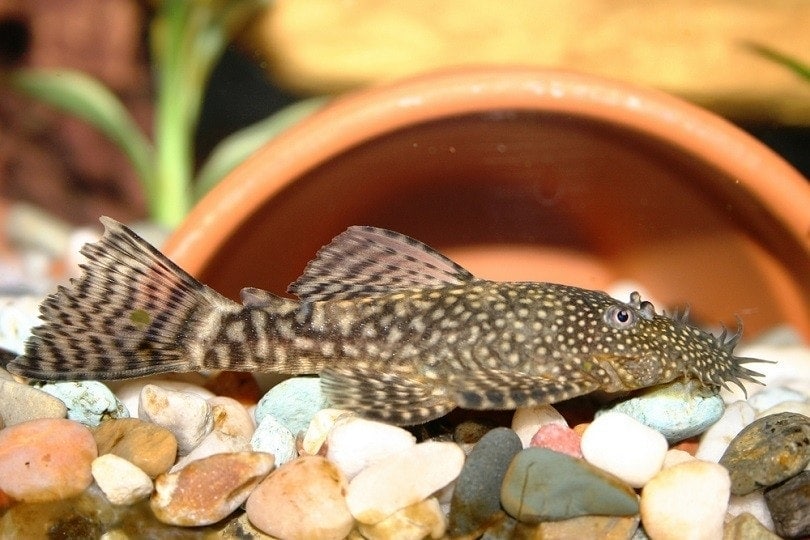
| Size: | 3–5 inches |
| Diet: | Herbivore (also needs protein) |
| Minimum Tank Size: | 25 gallons |
| Care Level: | Easy |
| Temperament: | Peaceful |
Also known as the bristlenose pleco, these bottom feeders are the most common of the plecos for the aquarium. It’s best only to have one pleco in your tank, but they aren’t known to harm tetras, and they’ll keep your tank relatively clean.
2. Cardinal Tetra (Paracheirodon axelrodi)
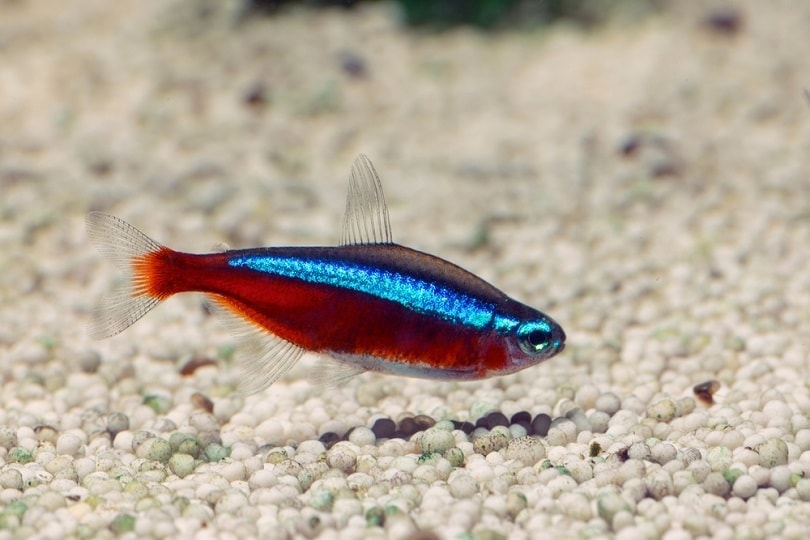
| Size: | Up to 2 inches |
| Diet: | Omnivore |
| Minimum Tank Size: | 20 gallons |
| Care Level: | Easy |
| Temperament: | Peaceful |
The cardinal is hardy, easy to look after, and has vivid blue and red colors. The blue runs vertically along the top and the red along the bottom. They make great tank mates because they are also tetras and have similar eating habits to the serpae.
3. Neon Tetra (Paracheirodon innesi)
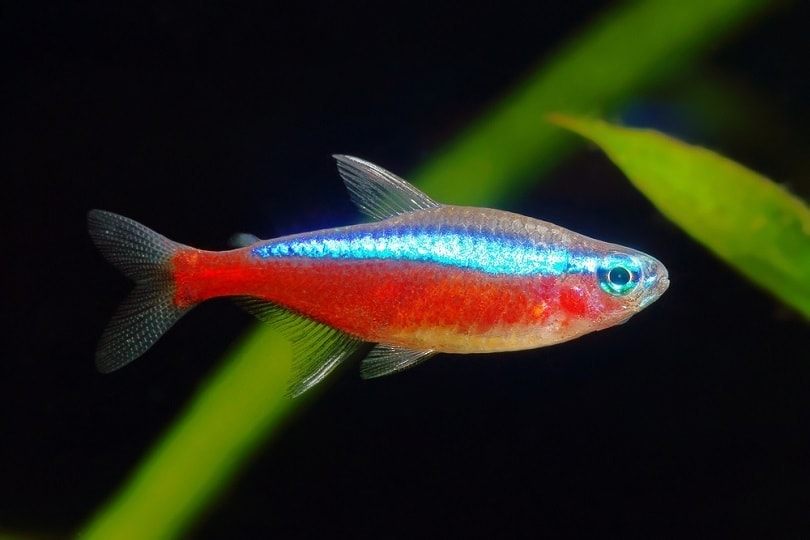
| Size: | 1.5 inches |
| Diet: | Omnivore |
| Minimum Tank Size: | 10 gallons |
| Care Level: | Easy |
| Temperament: | Peaceful |
The neon is a very popular tetra, thanks to its vibrant colors and easy upkeep. Although similar in appearance to the cardinal, they are turquoise towards the front with a thick, red stripe towards their back.
Also, like the cardinal, they make excellent tank mates because they are tetras and can form a part of a school, and they live in similar conditions as the serpae.
4. Zebra Danio (Danio rerio)
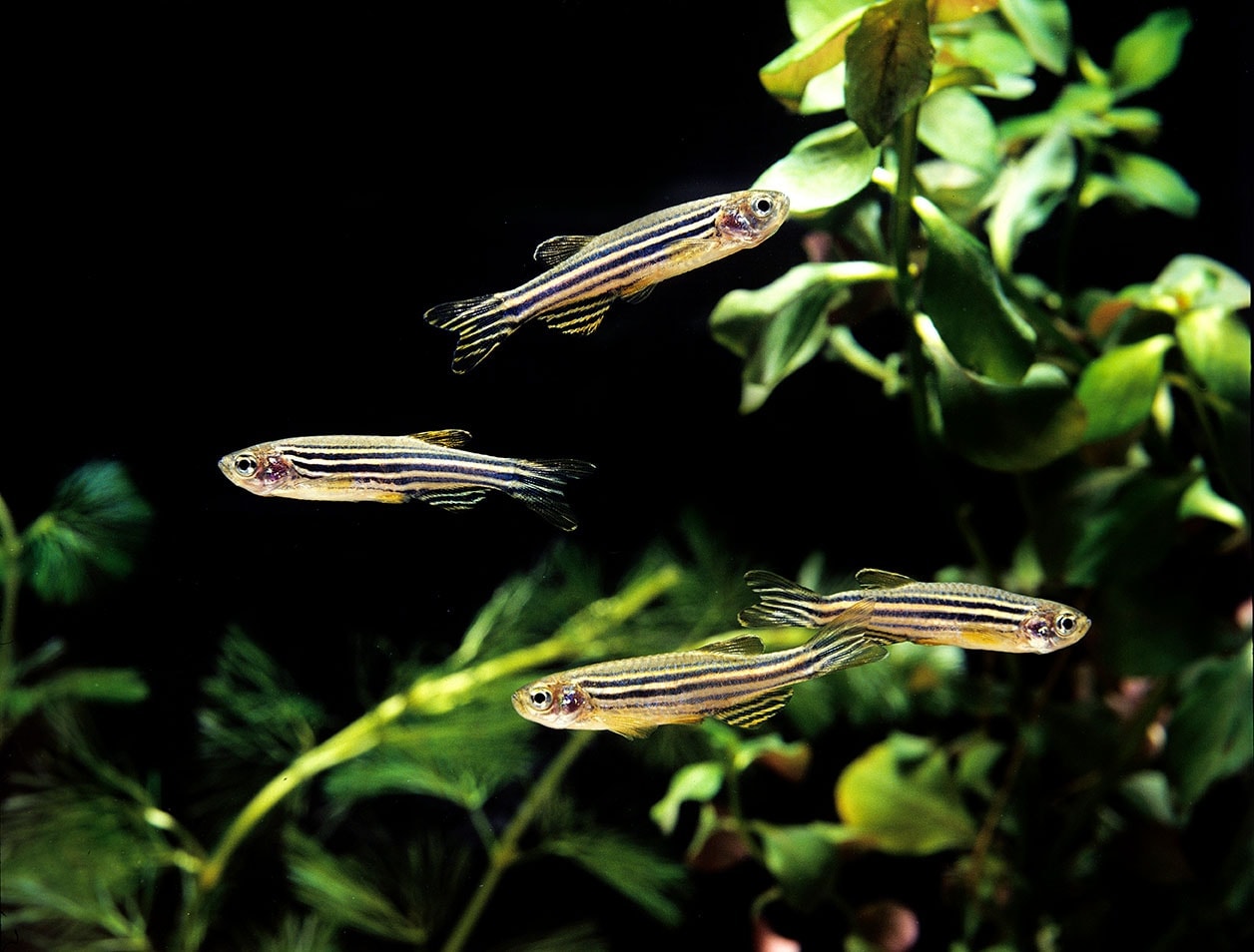
| Size: | 2 inches |
| Diet: | Omnivore |
| Minimum Tank Size: | 10 gallons |
| Care Level: | Easy |
| Temperament: | Peaceful |
The zebra danio is a peaceful, hardy, and easy-to-care-for freshwater fish. They do well in a school with faster-moving fish as they are social, and like the serpae, they don’t do well on their own. Like many others on this list, they are also great for beginners.
5. Black Skirt Tetra (Gymnocorymbus ternetzi)
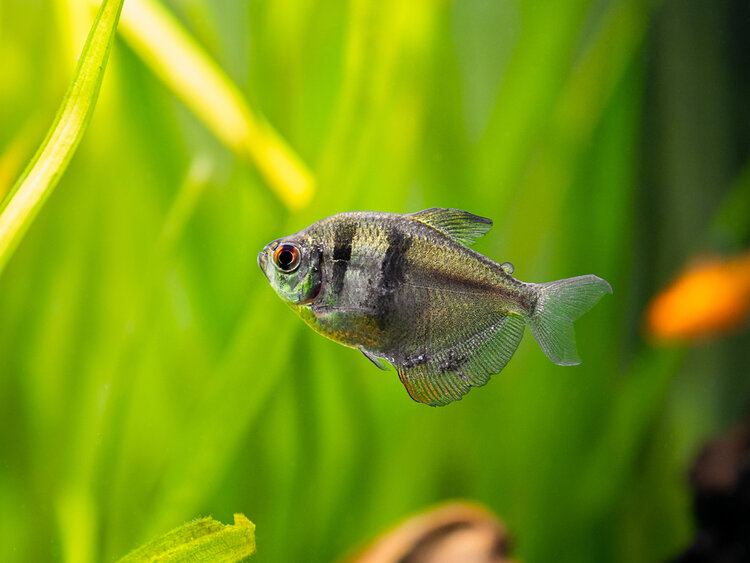
| Size: | 1 to 2.5 inches |
| Diet: | Omnivore |
| Minimum Tank Size: | 15 gallons |
| Care Level: | Moderate |
| Temperament: | Mildly aggressive |
Also known as the black widow tetra, the black skirt makes a great tank mate as long as no other fish in your aquarium has long-flowing fins. They are translucent silver with black stripes.
While all tetras are known to be fin nippers, the black skirt is a little more aggressive in this way. Otherwise, they won’t show any aggressive tendencies unless they are provoked.
6. Bloodfin Tetra (Aphyocharax anisitsi)
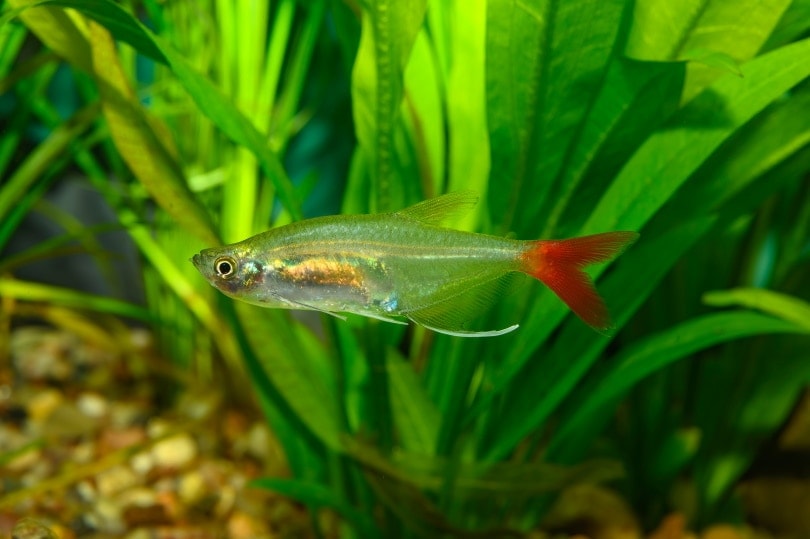
| Size: | 1.5–2 inches |
| Diet: | Carnivore |
| Minimum Tank Size: | 30 gallons |
| Care Level: | Easy |
| Temperament: | Peaceful |
The bloodfin is a silvery-blue fish with bright red fins that is hardy, easy to keep, and peaceful. They tend to prefer swimming in the middle and upper levels of the tank, and you’ll need a lid to prevent them from jumping out. They should be in a school of at least six fish and are constantly moving and fast swimmers.
7. Peppered Cory Catfish (Corydoras paleatus)
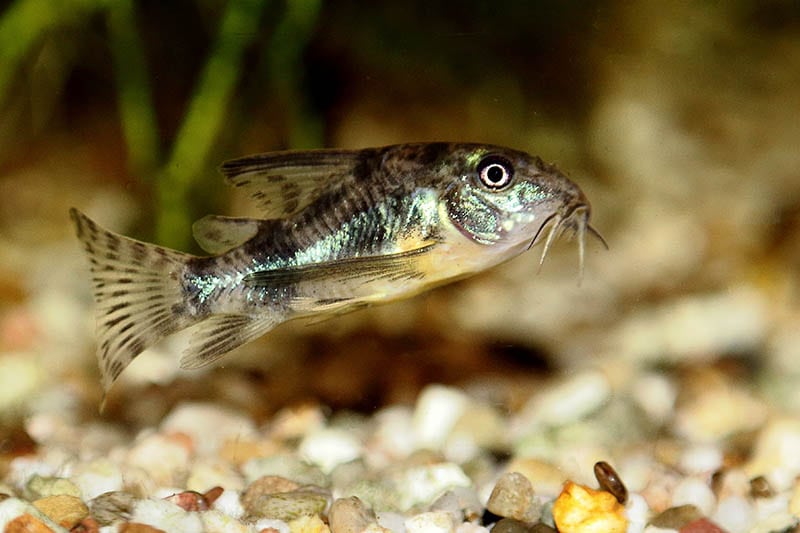
| Size: | 2–3 inches |
| Diet: | Omnivore |
| Minimum Tank Size: | 10 gallons |
| Care Level: | Easy |
| Temperament: | Peaceful |
There are quite a large number of species of cory catfish available. The most common is the peppered cory, which is bronze in color with black patches and is 2 to 3 inches long.
The cory is a bottom feeder and spends its time on the bottom of the tank, and the serpae won’t pester them.
8. Tiger Barbs (Puntigrus tetrazona)
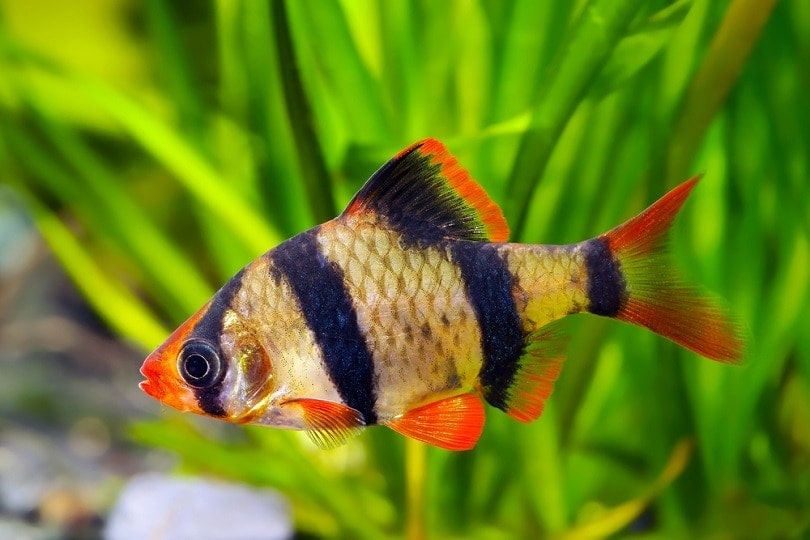
| Size: | 2–3 inches |
| Diet: | Omnivore |
| Minimum Tank Size: | 20 gallons |
| Care Level: | Easy to moderate |
| Temperament: | Playful with some aggression |
Tiger barbs are also known as fin nippers, so if you add some to your serpae tetra’s aquarium, you’ll need to have a minimum of five, but eight would be ideal. That way, they have their own school and will be less likely to bother the Serpae.
Tiger barbs are prone to harassing other fish but don’t necessarily cause any real harm. They tend to be gold, green, red, or pale silver with black stripes, which is how they got their name.
9. Kuhli Loaches (Pangio kuhlii)
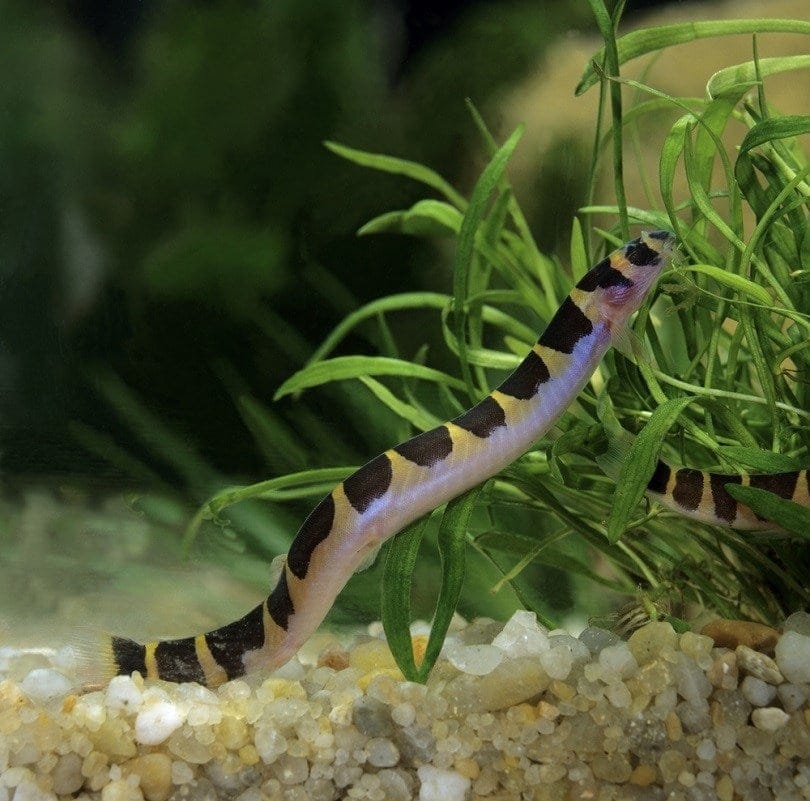
| Size: | 3–4 inches |
| Diet: | Omnivore |
| Minimum Tank Size: | 20 gallons |
| Care Level: | Easy |
| Temperament: | Peaceful |
There are many species of loaches, but the kuhli is one of the most common. They are very long fish that can almost appear eel-like. While they are bottom feeders, they also do well with other loaches, and therefore, you should consider adding three to six to the aquarium.
Loaches are easy to care for since they are not picky and will eat much of what drops into the substrate.
What Makes a Good Tank Mate for the Serpae Tetra?
Serpae tetras are fast swimming and are generally calm. They do best when living in a community tank and with a school of a minimum of five other serpae tetras. Tetras will only school with the same species, so while having other tetras in your aquarium (like the neon) will work, you’ll still need a minimum of six of the other species so that they can form their own school.
Tankmates should also be fast swimmers with short fins, thanks to the tetra’s fin nipping. You’ll also want the tank mates to be comfortable with the size of your tank. You need to consider their swimming habits, that they eat the same food as your Serpae, are calm and peaceful, and that they prefer the same or similar water parameters (more on this later).
What Swimming Levels Do Serpae Tetra Prefer in the Aquarium?
All tetras tend to be middle-level fish, which is the perfect spot in the aquarium to watch a school of your Serpae tetras swimming. When populating your aquarium, look for species that make the best community tank mates, but also think about the different levels they all swim in. It’s a good idea to aim for a variety of top-level, middle, and bottom-dwelling fish for variety.
Remember to avoid slow-moving fish, particularly for the middle level.

Water Parameters
Serpae tetras come from South America and can be found in the Amazon Basin in Brazil, Argentina, Paraguay, and Guyana. They live in slow-moving rivers and are also found in streams and ponds.
It’s best to provide the tetras with water parameters that closely mimic their natural environment.
- Temperature: 72° F to 79° F
- Water Hardness: 5 to 25 dGH
- Water pH: 5 to 7.8
Tetras generally prefer the water to be slightly acidic, soft, and warm, which won’t work for other kinds of fish, which is why finding the right tank mates is so essential.
Size
The Serpae tetra has the famous tetra shape, with a tall frame that is relatively flat and in a trapezoidal shape. A full-grown serpae tetra can be as large as 1.75 inches but averages about 1.6 inches.
They can grow as large as 2 inches, but that’s quite rare, and they have an expected lifespan of about 3 to 7 years.
Aggressive Behaviors
The serpae tetra isn’t necessarily aggressive, but as previously discussed, they are known to be fin nippers. That is why it’s crucial to have at least six Serpae kept together to form a school. This reduces a lot of fin-nipping behavior.
Besides the fin nipping, it’s a good idea to provide your fish with materials and objects to explore. They’ll spend time chasing each other, and having areas to hide will keep them happy.

The 4 Benefits of Having Tank Mates for the Serpae Tetra in Your Aquarium
1. School
The Serpae tetra prefers to swim in a school instead of being alone.
2. Confidence
The tetra gains confidence when swimming with a school. It will spend more time exploring rather than hiding.
3. Peaceful
The serpae tetra tends to be a calm and peaceful fish and is only aggressive if provoked. Keeping six or more tetras together reduces their aggressive tendencies, including nipping behavior. They are great candidates for tank mates.
4. Exploration
Serpae tetras will leave other tank mates alone if they aren’t part of the school, but it gives them the opportunity to explore.
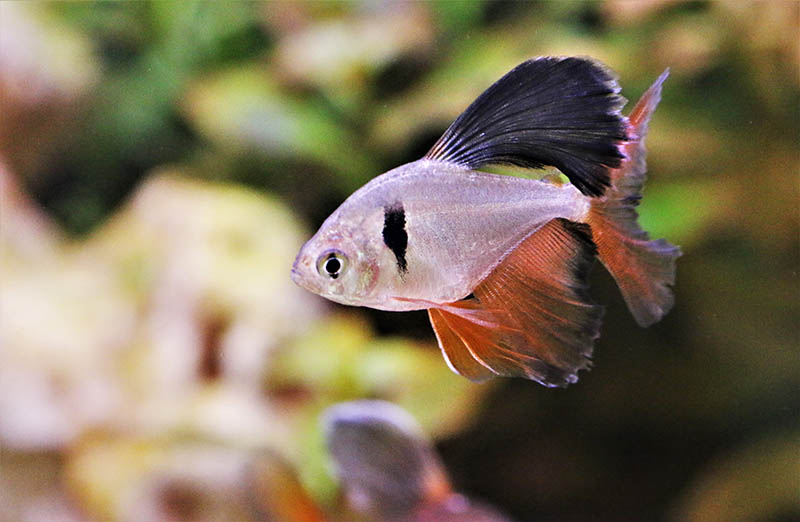
Swimming Habits
Other than swimming at the middle levels, the serpae has a unique swimming method. They swim in a rather jerky fashion, which means they will swim fast for a time, suddenly stop, and then dart off again.
You should plan on a tank that holds a minimum of 20 gallons if you only want a small school of Serpae, but the more tank mates you add, the bigger the tank needs to be.
Conclusion
Serpae tetras are beautiful little fish that should get along with their tank mates, provided they are fast swimmers and don’t have tantalizingly long fins. Remember to research any tank mates you’re considering, as you want your Serpae and the new fish to all get along and remain healthy. You should also avoid large fish since the tiny Serpae might fall victim to the larger species.
As long as you choose the tank mates with consideration, read up on the Serpae tetra, and carefully observe after you’ve introduced them to your tank, you should end up with a beautiful and exciting aquarium with happy fish.
Featured Image Credit: Joan Carles Juarez, Shutterstock



